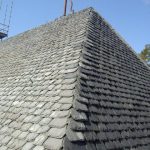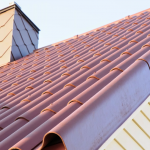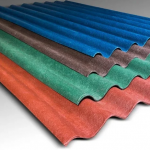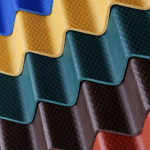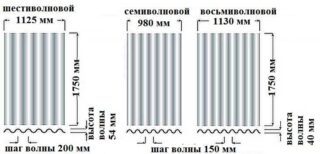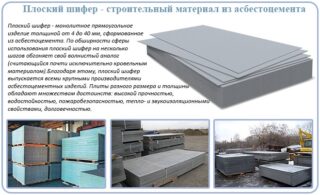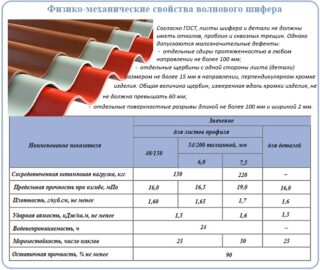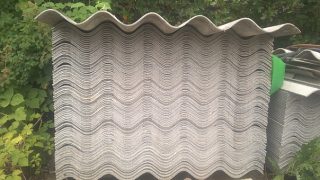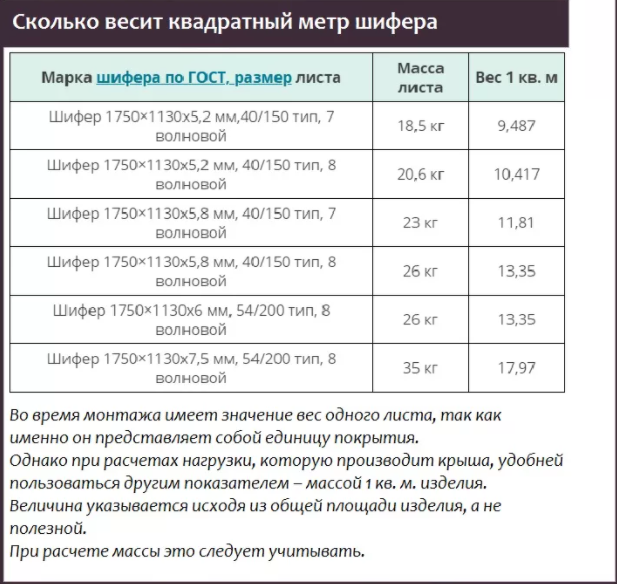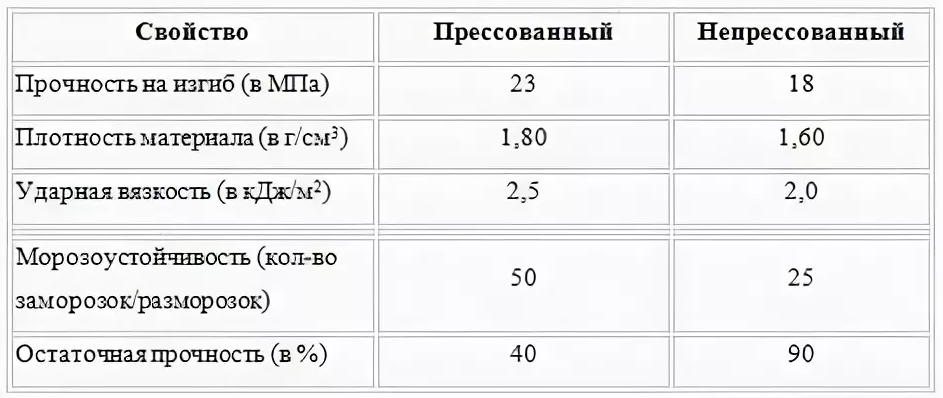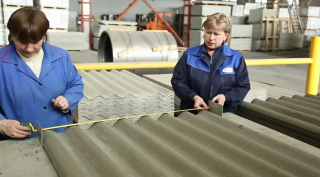There are almost no restrictions for the slate coating, but the material of asbestos, cement and sand has a significant mass. The weight of the slate affects the choice of the cross-section of the elements of the rafter system, it is taken into account when calculating the foundation. The material is made in accordance with GOST 30.340 - 1995, which regulates the thickness of the sheets, the number of waves on the surface, and the dimensions of the products. Manufacturers working according to technical specifications (TU) produce products that differ slightly from standards.
Slate assortment
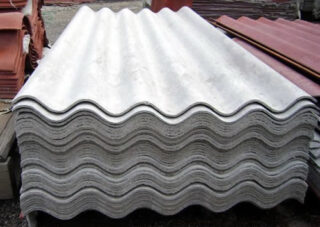
Products contain as part of Portland cement, chrysolite asbestos fibers, the mixture is dissolved in water. Add modifiers and plasticizers to improve material properties.
Release varieties of products:
- natural natural slate from rock slate;
- asbestos-cement flat or corrugated sheets;
- fiber cement, where fibers of other types are used instead of asbestos;
- polymer sand, where polymer particles act as binders;
- composite, another name - keramoplast.
Modern slate sheets are of low cost and good quality. More often, standard asbestos-cement sheets are used. Flat ones are used for fences, and corrugated ones are used as roofing.
Unified slate
Strip sizes:
- eight-wave - width 1125 mm, length 1750 mm;
- seven-wave - 980 mm and 1750 mm;
- six-wave - 1125 mm and 1750 mm.
A unified version is set if you need to cover a large roof of a simple shape, flat without arches.
Ordinary profile
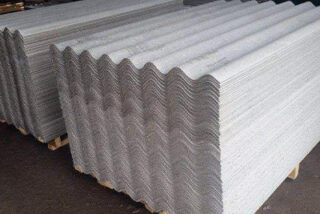
Marked with letters VO. Put on the roofs of private buildings with a small square... On small roofs, the dimensions of the panels help to avoid a lot of cuts and adjustments. The set includes additional elements made of asbestos cement for closing abutments, skates, valleys, gutters. Material thickness 5.8 - 6 mm for model 54/200, and for grades 40/150 - 5.2 mm.
Dimensions (edit) slate products:
- width - 680 mm;
- length - 1120 mm.
Slate include to the category of durable materials, therefore, when calculating the lathing, they save money, since the bars are placed sparsely. Slats with a section of 5 x 5 cm are mounted with a step of 50 - 70 cm, which depends on the slope of the slopes. Bars with a section of 75 x 80 mm are used on the rafters, they are placed with an interval of 0.7 - 1.1 m.
Reinforced version
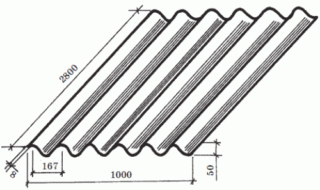
Dimensions (edit) reinforced slate:
- sheet width - 1000 mm;
- length - 2800 mm.
During the manufacture of such slate, it undergoes enhanced quality control, samples from each batch are checked for strength and compliance with geometric parameters.
Flat sheets
Dimensions (edit) flat slabs:
- 2.0 x 1.5 m;
- 1.75 x 1.12 m;
- 3.0 x 1.5 m;
- 1.5 x 1.0 m.
The most popular panels are 1.75 x 1.12 m, their thickness is 8 - 20 mm, the mass of the element largely depends on this indicator. For example, with a thickness of 10 mm, a sheet weighs over 100 kg, and a product with a thickness of 8 mm over 60 kg. A 6 mm thick slate board has a mass of 40 kg.
Wave Slate Specifications
Sheet material does not collapse from temperature drops, humidity, does not corrode... You can walk on the sheets during installation, they do not crack under the weight of a person. Slate does not burn during a fire, does not melt. Panels do not build up static electricity.
The individual slate sheets are lightweight, so they are delivered to the roof without a crane.
Dependence of weight on the number of waves on the surface
More often they use a profile with 7 or 8 ribs on one sheet, because the material is ideal for residential roofs. For such sheets, the working area almost does not differ from the general quadrature. This is explained by the fact that the coating is laid with an overlap in one wave, and in 7 and 8 wave slates, the corrugation width is small.
For release use different in width raw materials, on which a certain number of waves are subsequently formed. The initial total width used in the production of slate with different numbers of corrugations affects the weight of the final slate model. Weight also depends on the wall thickness of the material. Previously produced sheets with sizes 0.68 x 1.2 m, weight was about 9 kg... Manufacturers are now making large-size panels.
Six wave material
6-wave slate slab weight:
- grade 54/200 thickness 6 mm - weight 26 kg;
- grade 54/200 thickness 7.5 mm - weight 35 kg.
Six-wave slate is produced reinforced, therefore it is used for a flatter roof (with a slope of 10 - 12 °). The coating will be able to withstand the load from the snow crust.
Seven Wave Slate
Seven Wave Panels Size 1.75 m in length, 1.13 m in width. The working area is 1,336 m2. The step of the wave is prescribed in the standards of GOST, the height of the corrugation is 40 mm, the step is 150 mm, sheets with a thickness of 5.2 and 5.8 mm are produced.
7-wave slate sheet weight:
- grade 40/150, 5.2 mm thick - 18.5 kg;
- grade 40/150, thickness 5.8 mm - 23 kg.
Products with 7 waves on a plane are placed on the roofs of houses, baths, gazebos, and outbuildings. Panels are unified, reinforced and ordinary.
Eight Wave Sheets
Sheets are produced with a thickness of 5.2; 5.8; 0.6; 0.75 mm. Slate weight depends on moisture saturation, therefore, all weight characteristics are given for a conditionally dry material with moisture no more than 18%.
Standard 8-wave slate weighs:
- panel model 40/150 with a thickness of 5.2 mm - 20.6 kg;
- grade 40/150 with a thickness of 5.8 mm - 26 kg;
- 54/200, 0.6 mm - 28 kg;
- 54/200, 0.75 mm - 35 kg.
With a single-wave overlap, the working area is 1.57 m², and the total area is 1.97 m².
Weight of flat slate sheets
Smooth sheets release pressed and unpressed. The difference lies in the way the green mass is cured. In the first case, the workpieces are processed under pressure under a press for compaction, then dried in vivo. The second method does not involve pressing, raw materials dry without compaction.
Weight of smooth slate panels:
- thickness 8 mm, dimensions 3.6 x 1.5 m pressed - 92 kg, unpressed - 85 kg;
- 8 mm, dimensions 2.0 x 1.5 m - 64 and 59 kg;
- 10 mm, dimensions 3.6 x 1.5 m — 115 kg and 104 kg;
- 10 mm, dimensions 2.0 x 1.5 m - 80 kg and 74 kg.
Pressed products are distinguished by higher density, hardness, strength. They can withstand more frost and thawing. But after the exhaustion of the calculated and practical resource, the pressed sheets reduce the properties to 40% of the original ones. Non-pressed ones are designed for less frost, but after the term they have up to 80 - 85% quality.

Quality control
Samples exposed to repeated freezing, compression, stretching... Visually determine the correctness of the geometric shape and dimensions waves, sheet, corrugation step. The information is entered into the technical passport of the party, the date of issue is set.

